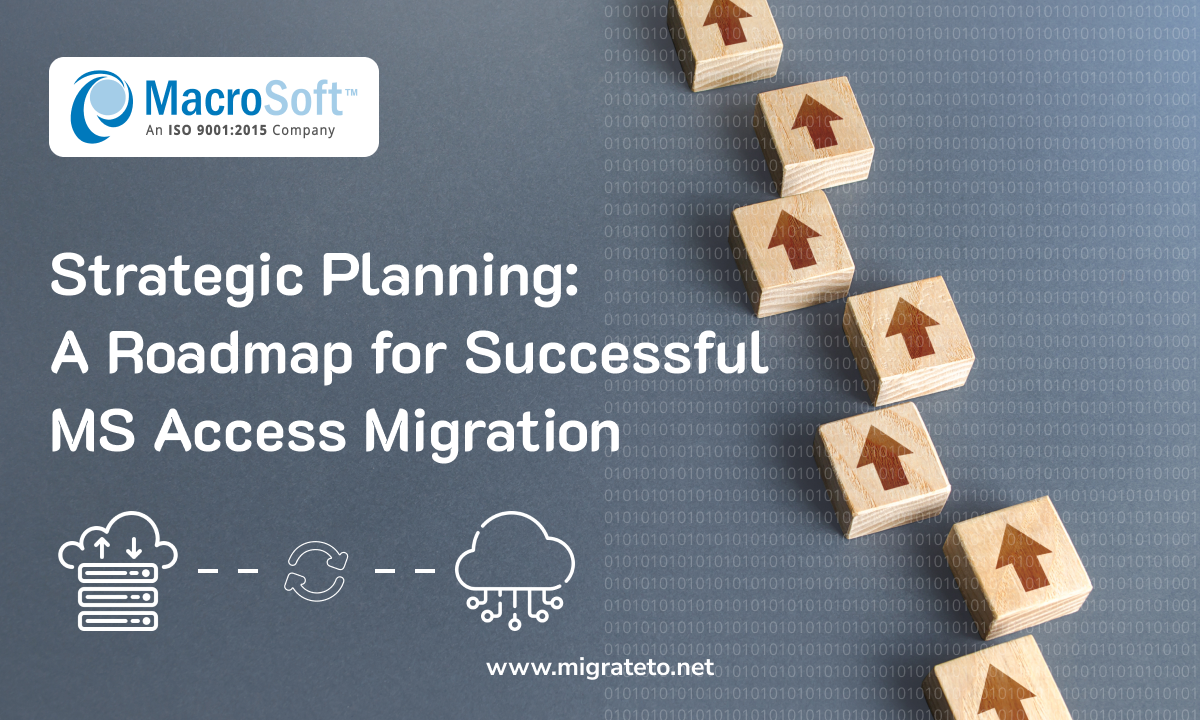
By Joe Rafanelli | Published on January 30th, 2024 |
In the fast-paced world of technology, businesses need scalable and robust solutions to stay competitive. For many organizations, migrating from legacy systems like Microsoft Access to more modern alternatives is not just a choice but a strategic necessity. In this blog, we will delve into the critical role of strategic planning as a roadmap for a successful MS Access migration, with a focus on Macrosoft’s proven Desk to Cloud migration practice.
Challenges and Limitations of MS Access: Microsoft Access has served as a reliable database solution for years, but as businesses grow, the limitations of MS Access become apparent. Issues such as data security vulnerabilities, difficulty in handling large datasets, and a lack of scalability make migration imperative for sustained business growth.
Expertise in MS Access Migration: Macrosoft’s Desk to Cloud migration practice stands out for its specialized approach to MS Access migration projects. With a team of seasoned professionals, Macrosoft is committed to delivering strategic solutions tailored to each client’s unique business requirements.
Collaborative Client Approach: Macrosoft places a strong emphasis on collaboration with clients. By involving clients in every step of the migration process, Macrosoft ensures that the end result aligns with the client’s vision and business goals.
1. Assessment Phase
Comprehensive System Evaluation: Before embarking on migration, a thorough assessment of the existing MS Access system is conducted. Macrosoft’s experts evaluate the database structure, identify data dependencies, and pinpoint potential roadblocks that might arise during migration.
2. Define Migration Goals and Objectives
Clear Goals for Success: Clear and defined goals are crucial for a successful migration. Macrosoft works closely with clients to establish specific, measurable, achievable, relevant, and time-bound (SMART) objectives that guide the entire migration process.
3. Risk Analysis and Mitigation
Identifying and Mitigating Risks: Migration projects inherently come with risks. Macrosoft conducts a comprehensive risk analysis, identifying potential challenges and implementing effective mitigation strategies to ensure a smooth transition.
4. Data Migration Strategy
Ensuring Data Integrity: One of the critical aspects of migration is the seamless transfer of data. Macrosoft employs a robust data migration strategy that ensures data integrity throughout the migration process, minimizing the risk of data loss or corruption.
5. Selecting the Right Technology Stack
Aligning with Business Goals: Selecting the right technology stack is paramount to the success of the migration. Macrosoft assists clients in choosing technologies that align with their business goals, ensuring a future-proof and scalable solution.
6. Testing and Quality Assurance
Rigorous Testing Protocols: To guarantee a smooth transition, Macrosoft follows rigorous testing and quality assurance measures. This includes extensive testing of the migrated solution to identify and rectify any issues before deployment.
Positive Outcomes of Strategic Planning: Strategic planning, as executed by Macrosoft, results in a myriad of benefits. Clients experience improved system performance, enhanced data security, and newfound scalability, enabling them to meet the evolving demands of their businesses.
In conclusion, the success of MS Access migration lies in meticulous strategic planning. Macrosoft’s Desk to Cloud migration practice not only recognizes the importance of this planning but excels in implementing it. As businesses navigate the complex landscape of migration, Macrosoft emerges as a reliable partner, guiding organizations toward a future-proof and efficient solution.